It was mid December, I had the rest of the month off, the feet were itching after a year spent indoors and I was looking for ideas. Europe had closed its borders and a blizzard was threatening to dump freezing temperatures and a couple of feet of snow and on a New York that had just decided to close its restaurants, bars and cafes a second time in response to a new wave of Covid infections. I couldn't travel to Europe or hang out in cafes; short, cold days precluded the long urban hikes that had sustained me through the close-down.
I discovered that I could buy a pass on Amtrak for two weeks of travel. Hmm, here was a chance to escape short, cold days, and the blizzard. I could catch up some much needed reading while watching the many geographies of the continent sweep past my train-window. Plus here was a chance to forage through those as yet unexplored nooks of the country.
Restless feet, a nostalgia for trains -I'd grown up with my face planted on train-windows as my dad used to work as a railroad engineer- and a curiosity about the country made me impulsively buy the two-week Amtrak train pass. Pass in hand, I now had to decide where to go. More news of the impending blizzard made warm sunny climes sound very appealing, so the next day found me and a trusted backpack stuffed with a sleeping bag and tent heading South to sunny Florida.
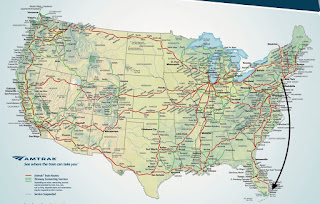 |
| New York - Miami, 12/16, 1,400 miles |
It was a 27 hour train-ride starting at three in the afternoon. The dusk saw the familiar sights of New Jersey slip by the windows on the way to Philadelphia. The train was nearly empty and the seats large and comfortable. I managed to curl up on the wide, reclined seats to wake up the next morning rushing by the flat plains of sunny Savannah, GA. Watching flatlands, marsh, tall grass and brush sweep by for a few more hours brought us to the larger than expected urban conglomeration that is Miami.
Miami (Dec 17-18)
Miami was quite different than my mental image of a tourism-driven beach city. I realized that Miami's economy is quite diverse, combining tourism, leisure, finance, shipping with Latin music and the entertainment businesses. While there was evidence of a beautiful-people lifestyle, there were other aspects that added to the mood and aura: the influx of money, leisure and creativity has painted the city in lovely pastel and white-wash art-deco architecture that merged beautifully with the sun, sand and water.
Newer buildings have adopted elements this art-deco style: eyebrow-shade shrouded corner windows, curved eaves, flowing vertical and horizontal lines, decorative railings, intricate masonry and stylized tiled-imagery. The adoption of these elements blended the new larger buildings organically with the older smaller structures creating a pleasant stylistic balance compared to the jarring mishmash of styles one often sees in older cities.

|
| Miami - Key West, Dec 18, 170 miles |
The Florida Keys (Dec 19)
The keys stretch for a hundred and fifty miles, tiny island after tiny island linked by 42 bridges. The narrow US Route-1 that connects the keys, in many places is protected from the sea and ocean by only a few yards of chalky white limestone on either side. Reading about the geography of the regions finally shed light on its skinny nature: the keys were an just-under-the-surface coral reef that got exposed when sea levels fell during the last ice-age. Key West, the island at the edge of the chain became a important naval base for the US, so an airstrip was built on it. An enterprising railroad magnate then decided to link it to the mainland by constructing more than forty bridges through the islands. A large hurricane then swept through and knocked numerous bridges into the Caribbean, and the railroad got abandoned. The US government then decided to step in and connect Key West to the mainland using the remnants of the railroad to build US route-1.
Kitschy establishments catered to frat-boys and partying women.
With its interesting geography, I got to see the sun set in the evening over the Caribbean Sea and then rise the next morning over the Atlantic.
It was mid December and I was the only person wearing full-length pants in the keys. After making a mental note, like Hemingway likely did half a century ago, that this was an excellent place to escape from city-life, winter-storms and intense earnestness of NYC, I decided to continue exploring the country. The South seemed a good place to spend Winter and the South-West was a part of the country that I was yet to explore. Arizona and New Mexico seemed like good candidates, but sadly Amtrak had cancelled the train that took people from Miami to New Orleans and further West. Reluctant to abandon train-travel, I found that the only practical way to get to the south-west was to fly to Tuscon, Arizona.
 |
| Florida - Arizona, Dec 20, 1,600 miles |
Tuscon, Arizona (Dec 20)
I had little to guide me on what to expect of Tuscon. I knew it was a college town in the desert bordered by mountains but I knew little little beside that. When I got there, I found Tuscon to be a wind-swept small town in the desert surrounded by small hills. While the city-center looked decidedly American, the dirt-swept outskirts with crumbling, low buildings were what I'd imagined the Mexican rural areas to be like. Not surprising, I guess, given that we were just a few miles from the border. The cacti-populated Saguaro National Park with its campsites beckoned, but it was clear that this was a place that did not believe much in public-transportation: there was no way to go watch giant Saguaro cacti without renting or hailing a car. Disappointed at not being able to spend a few days camping under star-swept big skies and waking up to giant cacti, I realized that I'd have to move on West. I jumped on the only train in Tuscon that was heading West and found myself waking up in Southern California
 |
| Arizona - Oregon, Dec 21, 1,700 miles |
The San Joaquin Valley, CA (Dec 21)
Oregon (Dec 22)
Our train crossed over from California into Oregon early in the morning, and almost immediately started climbing the thickly snow encrusted Cascade mountains. These hills, with their miles of pines and firs reminded me of the mountains of northern New York state and New England. It was clear that, unlike the North-East,
logging was still a big industry in Oregon from the numerous timber-laden
freight-trains we passed.
After slowly cutting through the
Eastern Cascades the train sped through the less flat central
valley where the arable land, streams and lakes had created the agriculturally based towns of Eugene, and the capital
Salem.
Portland, Oregon (Dec 23-24)
I'd always wondered why Portland featured so prominently in clashes between police and citizens. After visiting Portland I think I have a semblance of an understanding. The city has an anti-establishment, liberal vibe that I associate with the Berkeley and Columbia in the 60's counter-culture: it also felt more sincerely live-and-let-live liberal than the partisan, tribal progressive attitudes I've encountered East.
Some things stood out in Portland: it had the largest number of street-people living in tents I've seen anywhere, easily eclipsing SF. Interestingly, unlike other cities, I did not see signs that the urban middle-class were actively try to push them out of sight into sanitized tenements using the police.
Food and Drinks
The second thing that struck me was the quality of the beer and food. I visited Breakside Brewers, a local brewery that had a huge multi-floor outlet in the middle of town. Despite being someone who is fairly particular about his beers -I invariably only like simple pilseners made with the the most basic of ingredients, and find strong flavors distracting- I enjoyed their home-brewed pilsener. So much so that I bough myself a large growler of beer for my train-journey.
They also had a superb creamy soup with a caramelized onion base. It reminded me to make myself some French Onion Soup -also made with a caramelized onion base- when I got back home. During my wanderings I also stopped by a small local ramen place, and was warmed by some excellent creamy tonkotsu broth, with pickled ginger and cucumbers adding to the texture.
Green Spaces
Bridges
 |
| Oregon - Washington, Dec 24, 200 miles |
Seattle (Dec 24-25)
I then cut across town and walked through the affluent Queen Anne neighborhood full of charming homes with gardens. Despite it looking like a semi-urban family neighborhood, I read that the neighborhoods demographics had become more and more single, so much so that the last of the areas' schools had to close down. All no doubt of the tech-boom and its affluent young.
Lovely Washington Park and its Arboretum
Seattle, like Portland, seems to place a large emphasis on good food, drink and books. I lost myself for a while in the yard and yards of bookshelves that the block-long bookstore "Powells City of Books" hosted. There were breweries and coffee-shops everywhere; the place I went to get myself a cappuccino provided no sweeteners or other additives: clearly they expected you to enjoy the unspoiled aroma of the perfectly brewed cup of fresh coffee.
Montana (Dec 27)
Minnesota (Dec 28)
Pittsburgh
However there are signs that the institutions that Carnegie, Frick and Mellon left behind were paying dividends. There were sporadic signs of a new prosperity born off the tech revolution.
 |
| Pittsburgh to NYC, Dec 30, 450 miles |


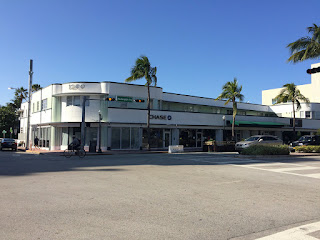



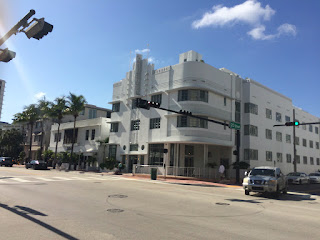
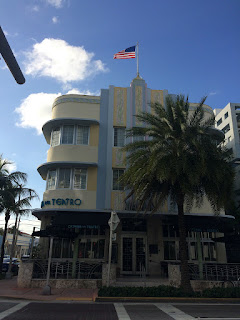













































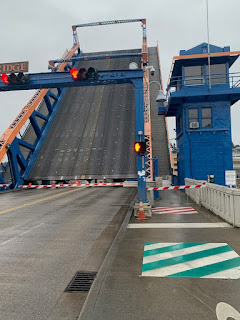























No comments:
New comments are not allowed.